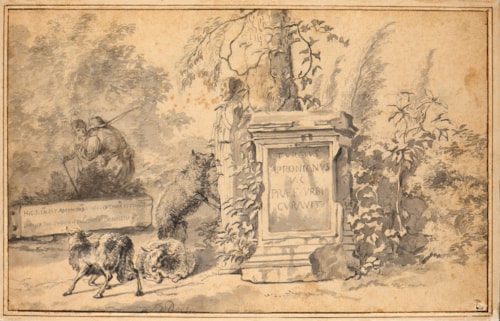
Jacob VAN DER DOES
Amsterdam 1623 - Sloten 1673
Biography
A pupil of Claes Moyaert in Amsterdam, Jacob Simonsz. van der Does also studied in Leiden before completing his training in Rome, where he spent the latter half of the 1640s and was given the Bentveughels nickname ‘Tamboer’ (‘Drummer Boy’). The biographer Arnold Houbraken writes of him that he spent several years in Rome ‘industriously painting and drawing’ before returning to Holland, around 1650. Van der Does settled in The Hague, where he was involved in the foundation of the Confrerie Pictura in 1656, but was back in Amsterdam by 1663. His paintings were primarily of pastoral Italianate landscapes with sheep and cattle, and he also produced a handful of etchings, only one of which is signed and dated (1650). Houbraken records that the death of his wife in 1661 so traumatized the artist that he produced no paintings for four years. He eventually settled in the village of Sloten, outside Amsterdam, where he died at the age of fifty. Two of his sons, Simon and Jacob van der Does the Younger, were also artists.
Only a handful of drawings by Van der Does may be securely dated to his stay in Rome in the late 1640s, and most of his extant drawings, despite their Italianate subject matter, can be dated to after his return to the Netherlands from Italy in 1650. As Peter Schatborn has further noted, ‘Van der Does signed and dated some thirty of his drawings made between 1650 and 1662, whereas only a few of his paintings have a date. It would appear that he worked primarily as a draughtsman rather than as a painter.’ Drawings by van der Does are in the collections of the British Museum, the Louvre, the Rijksmuseum in Amsterdam, the Hamburger Kunsthalle in Hamburg, the Pushkin State Museum of Fine Arts in Moscow, the Dutuit Collection at the Musée du Petit Palais in Paris, and elsewhere.


